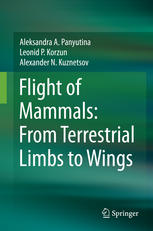

Most ebook files are in PDF format, so you can easily read them using various software such as Foxit Reader or directly on the Google Chrome browser.
Some ebook files are released by publishers in other formats such as .awz, .mobi, .epub, .fb2, etc. You may need to install specific software to read these formats on mobile/PC, such as Calibre.
Please read the tutorial at this link: https://ebookbell.com/faq
We offer FREE conversion to the popular formats you request; however, this may take some time. Therefore, right after payment, please email us, and we will try to provide the service as quickly as possible.
For some exceptional file formats or broken links (if any), please refrain from opening any disputes. Instead, email us first, and we will try to assist within a maximum of 6 hours.
EbookBell Team

4.1
80 reviewsThis book offers a new explanation for the development of flight in mammals and offers detailed morphological descriptions of mammals with flapping flight. The skeletomuscular apparatus of the shoulder girdle and forelimbs of tree shrews, flying lemurs and bats is described in detail. Special attention is paid to the recognition of peculiar features of the skeleton and joints. For the basic locomotor patterns of flying lemurs and bats, the kinematic models of the shoulder girdle elements are developed. The most important locomotor postures of these animals are analyzed by means of statics. The key structural characters of the shoulder girdle and forelimbs of flying lemurs and bats, the formation of which provided transition of mammals from terrestrial locomotion to gliding and then, to flapping flight, are recognized. The concept is proposed that preadaptations preceding the acquisition of flapping flight could have come from widely sprawled forelimb posture while gliding from tree to tree and running up the thick trunks. It is shown that flying lemur is an adequate morphofunctional model for an ancestral stage of bats. The evolutionary ecomorphological scenario describing probable transformational stages of typical parasagittal limbs of chiropteran ancestors into wings is developed.